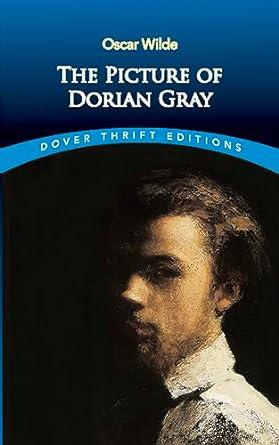
The Picture of Dorian Gray is a philosophical novel by the Irish writer Oscar Wilde. It was originally published in 1890, and soon after its publication, it became one of the best-selling books.
It circles around the doctrine of aestheticism and Oscar Wilde's role in that movement. He, along with the other writers of that movement, explained that art should not have a political or social purpose to serve, and it also has nothing to do with morality or conveying moral or sentimental messages.
The idea of "Art for the Art's Sake" played a prestigious role in Oscar Wilde's novel, which means that art needs no justification and ought only to deal with beauty. The purpose of the art is to entertain and appreciate its beauty.
"An artist should create beautiful things, but he should put nothing of his own life into them."
The tale begins with Basil Hallward, a very talented painter, making the portrait of Dorian Gray, who is sitting in front of him. Dorian Gray is a splendid young man with a beautiful nature and heart. He is also considered one of the most beautiful men in Greek mythology, like Helen of Troy. He is everything to Basil Hallward because the painter believes that this charming creature with good looks will make him a famous artist. It seems as though he is made of gold and ivory, and the curves of his lips rewrite history.
Basil Hallward makes the portrait of Dorian Gray, which seems more beauteous and charming than his own personality. When he glances at the picture, he feels jealous of his own portrait. He realizes how sad it is that I will grow old, wrinkled, and ugly, but this portrait will always remain young and lovely. As it is written in the book:
"I am jealous of everything whose beautydoesn't die. I am jealous of the portrait you have painted of me. Why should it keep what I must lose?"
Dorian Gray wishes to remain young forever. Whenever he sees his photo, sadness swallows him. He is ready to give everything for that sake, so his hedonistic nature forces him to sell his soul to the devil to get back his youth, and he also agrees that this picture will bear all his sins and doings.
As the story proceeds on, hedonism ruins him and makes him corrupt and wicked. He goes out to watch a play at the opera, where he falls in love with an actress, Sibyl Vane, not because of her beauty but because she is an excellent actress and knows very well how to please her audience. One day, he with Basil and Lord Henry go to watch her play,but unfortunately she doesn't act very well, which makes Dorian Gray furious and disappointed because art is everything to him, so he leaves her crying and in pain. After some days, she takes her life, and Dorian is responsible for that, but he doesn't think so. When he returns home and glances at the picture, he notices some changes in it. The face looks a bit pale, dark and a hint of cruelty is also seen in it. He kills Basil Hallward because he knows his secret, and Dorian is afraid that the painter might reveal to the world his real face.He sees his portrait again, and the painted face on the canvas looks sodden and unclean. The cheeks become hollow and flaccid, and the hairs lose their brightness. It gives off a monstrous look, so he decides to end it up, seizes a knife, and stabs the picture with it. There rises a cry of pian so horribly that when the servants enter the room, they see the portrait of their charming master hanging on the wall. There lies a deceased man with a knife in his heart. He looks like a monster, and all his sins can be seen on his face.With his death, the portrait returns to its original shape and looks young and attractive again.
It is a fabulous piece about the idea of art for art's sake. Oscar Wilde explains vividly that it is not the duty of art to serve society or tell others about ethics what is wrong and right. The only priority of the artist is to create beautiful things and to provide pleasure to others. The importance of art can be seen in the book:
"There is nothing that art cannot reveal or express."
"The reason I will not exhibit this picture is that I am afraid that I have shown in it the secret of my own soul."
The author warns its readers that bad external influences can exploit you ghastly. Don't let anyone overcome or make your decisions, because it happens with Dorian Gray.
Hedonistic nature is also a prestigious theme in this book. Dorian Gray is a hedonistic young man who wants to be beautiful forever without knowing that everything in this world must taste death. Don't be proud of your glory, beauty, and honor because death will swallow everything.
According to Oscar Wilde, we do everything to be famous, but once we have what we want, it no longer interests us. I don't agree with it because, for the majority of us, money, power, and fame are everything. We desire to have all this stuff, and none of us will ever want to throw it away.
In short, it's a wonderful book and contains some unique and important messages for its readers.